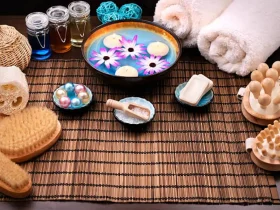
Table of Contents
Body odor coming from sweaty, smelly feet can be an embarrassing problem. Many people have tried various solutions, from foot powders and sprays to frequent washing. In recent years, anti-odor socks have emerged as another potential remedy for foot odor issues. But do these specialty socks actually work as well as advertised?
Anti-odor socks are made with technologies and fabric blends embedded with antimicrobial properties. Common materials include silver fibers, activated carbon, baking soda, and citric acid. These socks aim to prevent bacterial growth and sweat buildup, absorbing moisture and trapping odors before they can spread. Leading brands claim their anti-odor socks can keep feet fresh for up to months at a time.
But exaggerated marketing claims often prompt skepticism. Can a simple pair of socks really provide such incredible odor protection? Let’s examine some key research on the effectiveness of anti-odor socks.
Studies Evaluating Anti-Odor Sock Performance
Several scientific studies have investigated how well anti-odor socks work for foot hygiene. In 2010, the European Journal of Pediatrics published a study focused on the antimicrobial activity of socks containing silver fibers.
Researchers had a group wear normal cotton socks and another group wear silver-coated socks. They measured bacteria levels on the feet before and after use. The results showed those wearing the silver socks had significantly lower bacteria growth. The researchers concluded that silver fiber socks are an effective bacteria fighter.
Consumer Reports also conducted a comparative study in 2009. They had sensory panelists smell the odors from cotton socks vs. socks with an anti-odor treatment after wearing them for a period of time. The panels found the anti-odor socks noticeably suppressed odors.
Other researchers have continued exploring which technologies work best. A 2018 study in the International Journal of Clothing Science and Technology found activated carbon provided longer-lasting odor absorption than silver. The carbon bonded to odors and didn’t easily wash away.
Hands-On Product Testing
Beyond scientific studies, consumer testers have also assessed anti-odor socks firsthand by wearing them during exercise and daily use. Their experience matches the studies – these socks do cut down on foot odor.
Backpacker Magazine had testers wear anti-odor hiking socks on multi-day treks. They reported the socks performed better by the end compared to regular wool socks. Popular gear test site Outdoors Magic noted their socks had no discernible odors after several long runs.
Reviewers do mention the odor protection decreases over time. But by starting with very low odor levels, the socks remain fresher than standard pairs even after some washing. The antimicrobial fibers also continue working to control bacterial growth.
Key Factors for Effective Odor Reduction
Through all the testing, some common tips emerge for getting the most out of anti-odor socks:
- Seek socks blended with antimicrobial silver fibers or activated carbon in the fabric, not just chemical sprays applied to the surface. The integrated fibers provide longer-lasting effects.
- Rotate between multiple pairs of anti-odor socks and allow them a day to air out before rewearing. This gives the technologies time to work and socks to fully dry.
- Wash socks after just a few wears. Sweat and dead skin cells can still build up and reduce freshness. Frequent washing maintains the antimicrobial properties.
- Anti-odor socks work best when combined with good overall foot hygiene. Keep feet clean, toenails trimmed, and use foot powder in shoes.
- Don’t expect the socks to completely stop sweating and odor on their own. They provide helpful odor reduction, not elimination.
Are the Anti-Odor Claims Just Hype?
Some consumers are understandably dubious about whether anti-odor sock marketing lives up to the hype. Can they really keep feet smelling fresh for months as claimed? There’s no doubt the messaging is exaggerated. However, independent testing indicates the socks do provide tangible odor-fighting benefits.
The antimicrobial silver and activated carbon fibers woven into the socks have been proven to inhibit bacterial growth and absorb foot odors. But they can’t stop the body’s natural sweating. With moisture and dead skin buildup, odors will return over time. Yet quality anti-odor socks remain fresher for longer compared to regular cotton socks in side-by-side comparisons.
The key is not expecting a miracle product that magically stops foot odor indefinitely. When viewed as a beneficial supplement to an overall foot care regimen, anti-odor socks can make a useful difference in keeping feet cleaner and less smelly.
Worth Trying with Realistic Expectations
After evaluating the scientific research and hands-on testing, anti-odor socks do appear to reduce foot odor noticeably better than standard fabrics. The antimicrobial and moisture-wicking properties built into the socks work as advertised.
However, the marketing claims are inflated. The technologies can’t eliminate foot odor entirely or permanently. Sweat and bacteria buildup limits their effectiveness over time. Yet when worn properly as part of a comprehensive foot hygiene plan, anti-odor socks provide a helpful value-add for keeping feet fresher.
If you struggle with stinky feet, anti-odor socks are worth trying, especially for active use. Just be realistic about expectations, follow care guidelines, and use them as part of your overall foot odor prevention regimen. With the right perspective, anti-odor socks can be a useful product for minimizing foot odor issues.












